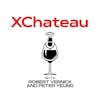Delving into the US wine consumer w/ Liz Thach MW, Wine Market Council

Liz dives into their most recent research on which wine consumers are buying, why, and how they buy.
With 27 years of research on the US wine consumer, the non-profit Wine Market Council is a critical industry resource. Liz Thach MW, the new President, dives into their most recent research on which wine consumers are buying, why, and how they buy. Members can get even deeper insight and access to the industry’s most robust database on US wine consumers.
Detailed Show Notes:
Wine Market Council (“WMC”) - non-profit, formed in 1996
- Mission - provide cutting-edge research on the US wine consumer purchasing habits, trends, and attitudes
- Members use WMC data for marketing and brand strategies
US wine sales
- From 1934 - today - there have been several declines in consumption
- The last decline - 1990s - showed similar factors, increased anti-alcohol groups, large excise taxes; catalysts to growth (French Paradox, introduction of new products - e.g., White Zinfandel, wine spritzers, Merlot getting popular)
- Growth for 20+ years from the late 1990s, peaking during Covid
- 2022 - decline in volume sales, 2023 - decline in volume (-9%) and $ sales
WMC does a benchmark segmentation study of wine consumers every 2 years
- Has done 19 over 27 years, the largest database of wine consumer trends
- Boomers - drinking less (61% cutting alcohol, faster than expected)
- Millennials - finally coming to wine, took until they were in their 30s (have children, bought homes, settled down, more financially stable); spend more on wine (often $20+)
- Gen Z (oldest is 26) - had high wine adoption initially, but in the last 3 years, it has declined (“cool to be sober”); 9% of Gen Z drinks wine, though only 33% are of legal drinking age; concerned about transparency of products (saw food scares, recalls), climate, and social equity
Wine drinkers are 60% married, 71% own homes, 53% live in suburbs
Ethnicity diversification making progress
- By 2050, the majority of the US will be non-white
- Today’s wine drinkers are 66% White (vs. 77-78% in the past), 15% Hispanic, 11% Black, and 5% Asian
- Significant progress with Blacks and Asians, but less with Hispanics, which are the fastest growing population in the US
- Ceja an example of a successful Hispanic owned winery, links wine and Hispanic cuisine and been successful
- Other ways to enhance diversity - ads that look like “us,” diversity in the workforce, pop up events where the consumer is (e.g., a Mexican wine importer did pop-ups at Hispanic events with taco trucks)
Premiumization is still happening, people drinking less, but better
- $20+/bottle drinkers are now ~7-15% of the total US population
- Younger people (21-30) purchasing more high-end wine
- Boomers dropping buying more expensive wines
Where people buy wine
- Supermarkets
- Wine shops
- Online now 12% vs. 5% pre-Covid
- 29% buy on their phone
93% of wine consumers on social media
- #1 Facebook (Boomers)
- YouTube - 61% use
- Instagram - 55%
- TikTok - 40% (wineries can’t advertise, but influencers can post)
- X/Twitter - went from #2 to #6
- Wine apps - 17%
2024 trends
- Anti-alcohol movement
- Talking about the benefits of wine (illegal for alcohol brands to discuss health) - WMC launched a social campaign called “Wine is…” (e.g., wine cocktails, family dinners…)
- Transparency/ingredient labeling (e.g., 50% of Americans believe wine has added sugar)
- Low / no alcohol movement - 40% of wine drinkers drinking less (of those, 40% drink non-alc spirits/cocktails, 35% NA beer, 34% NA wine)
- RTDs / single serving sizes
Hosted on Acast. See acast.com/privacy for more information.







